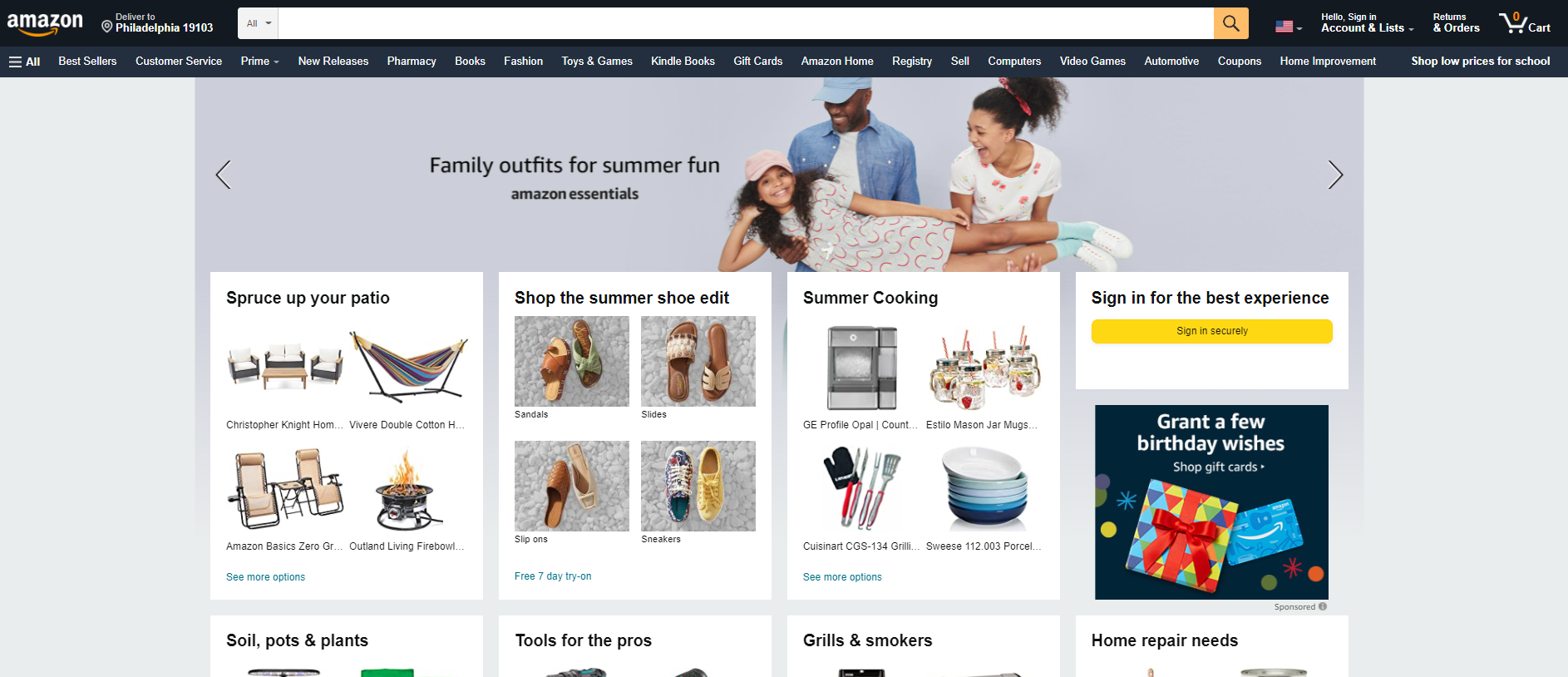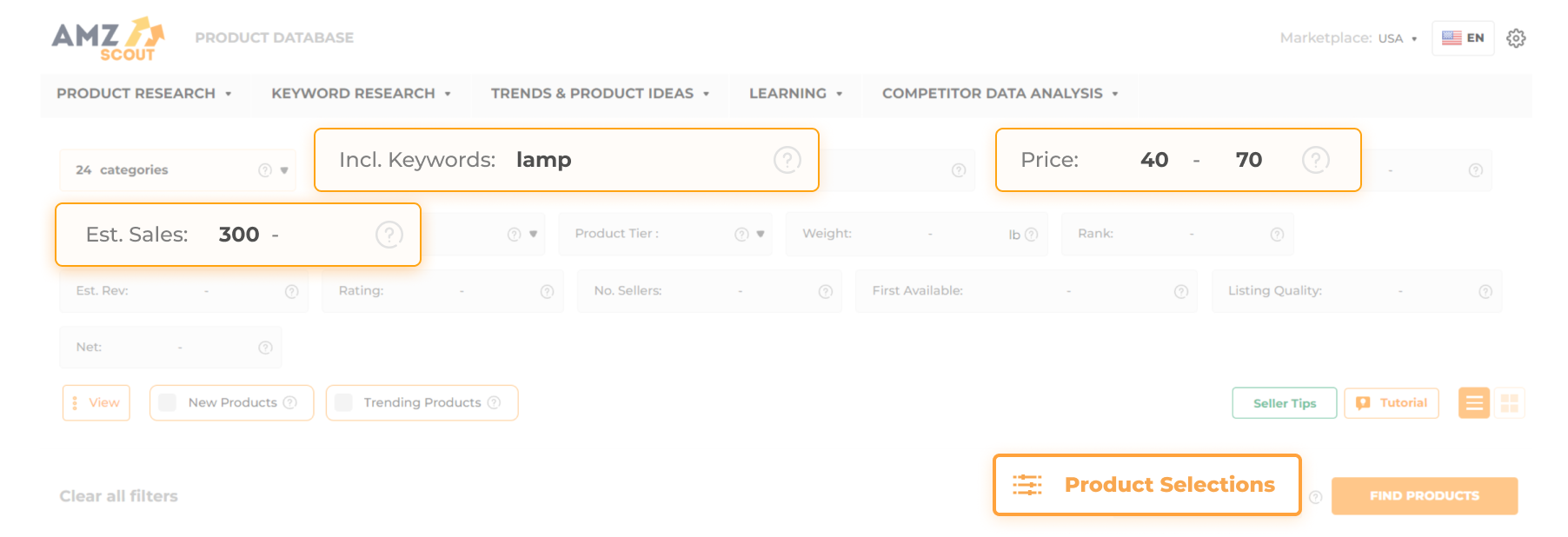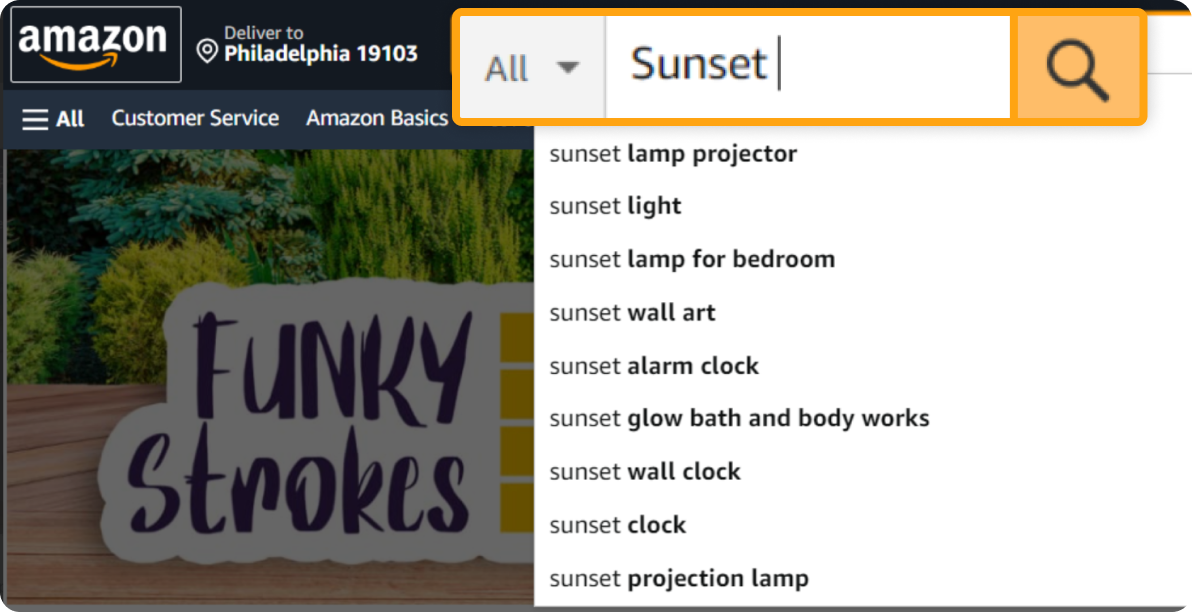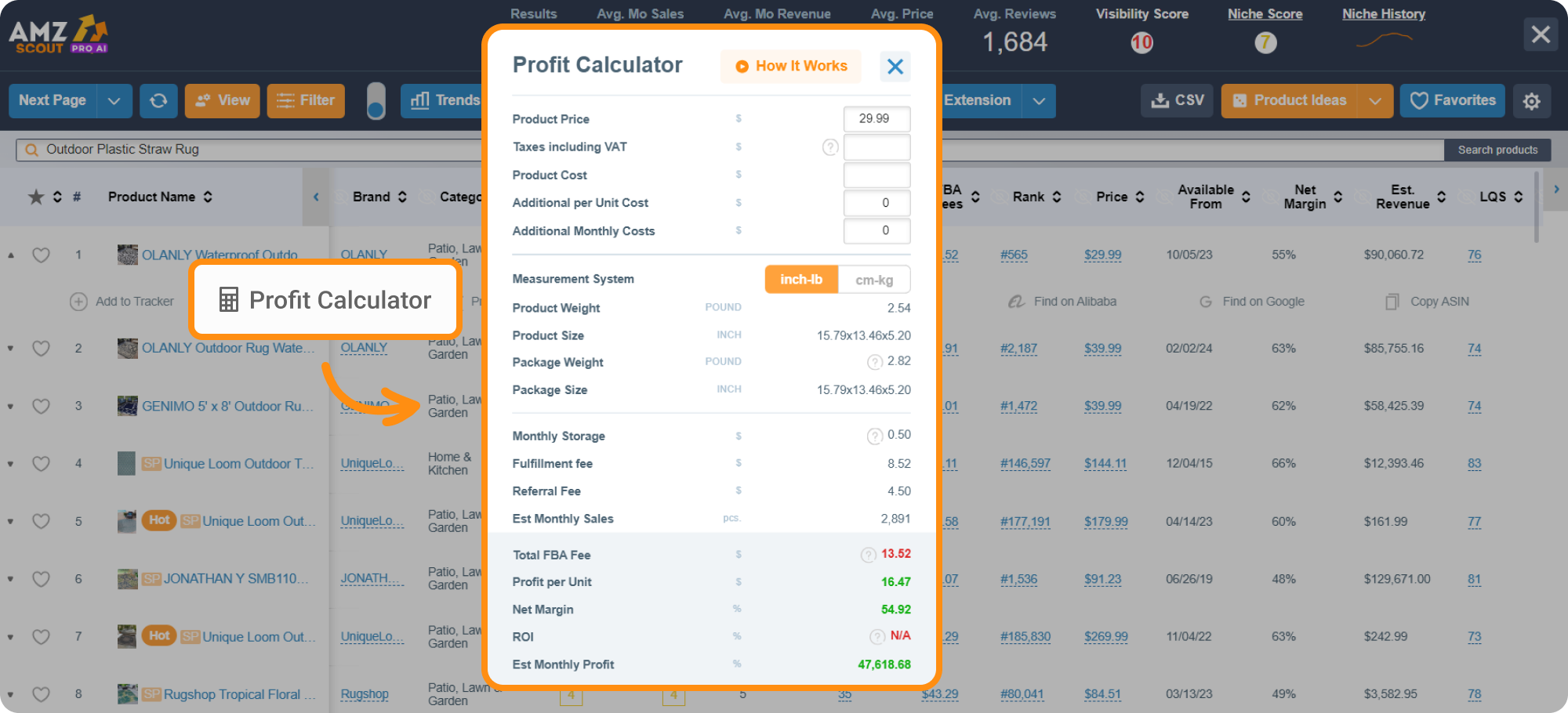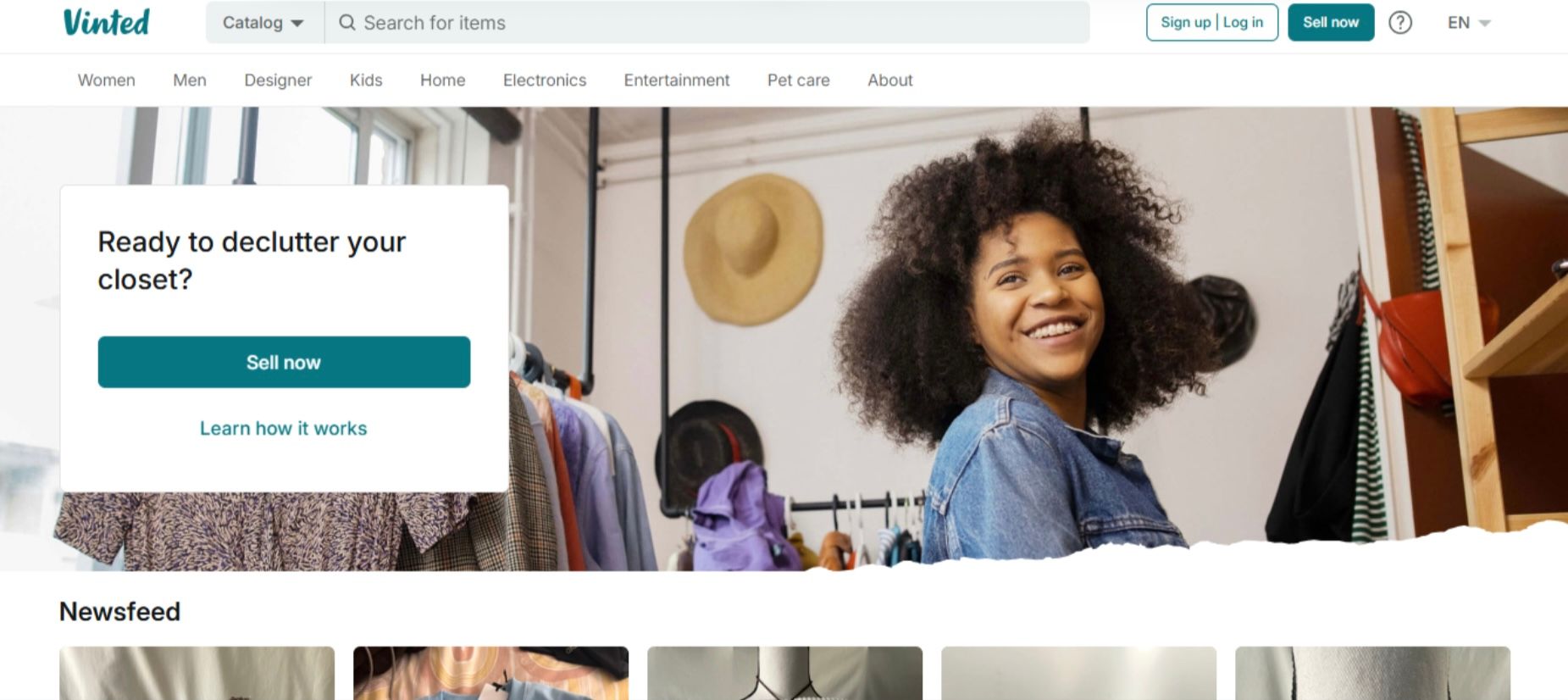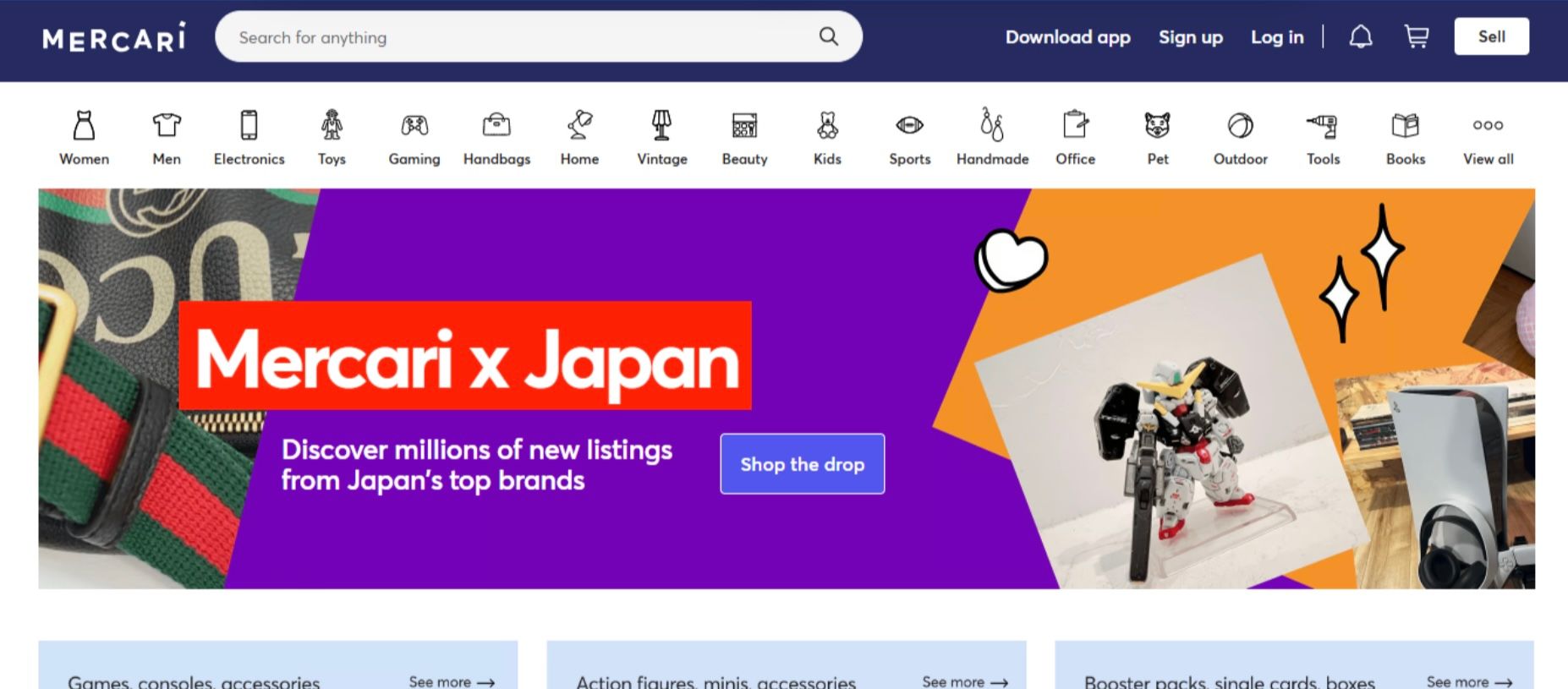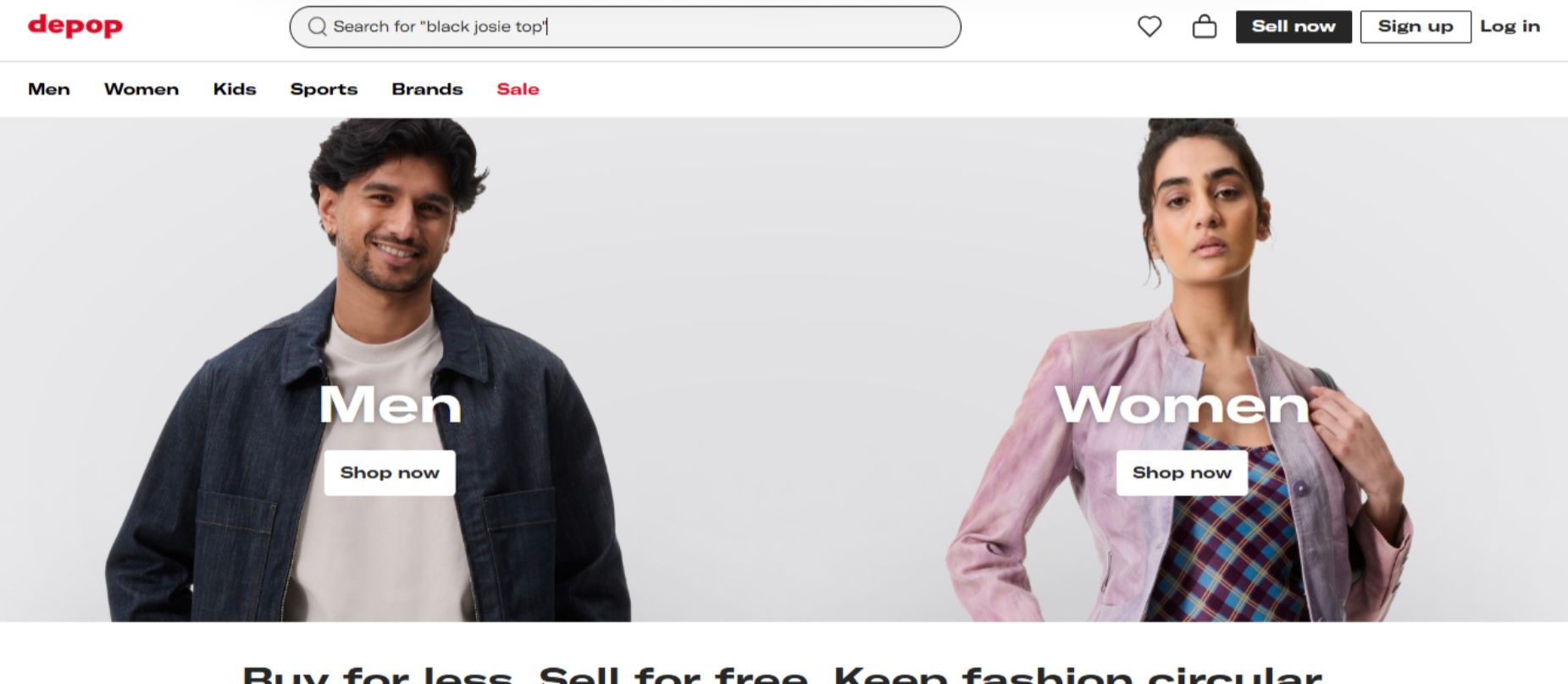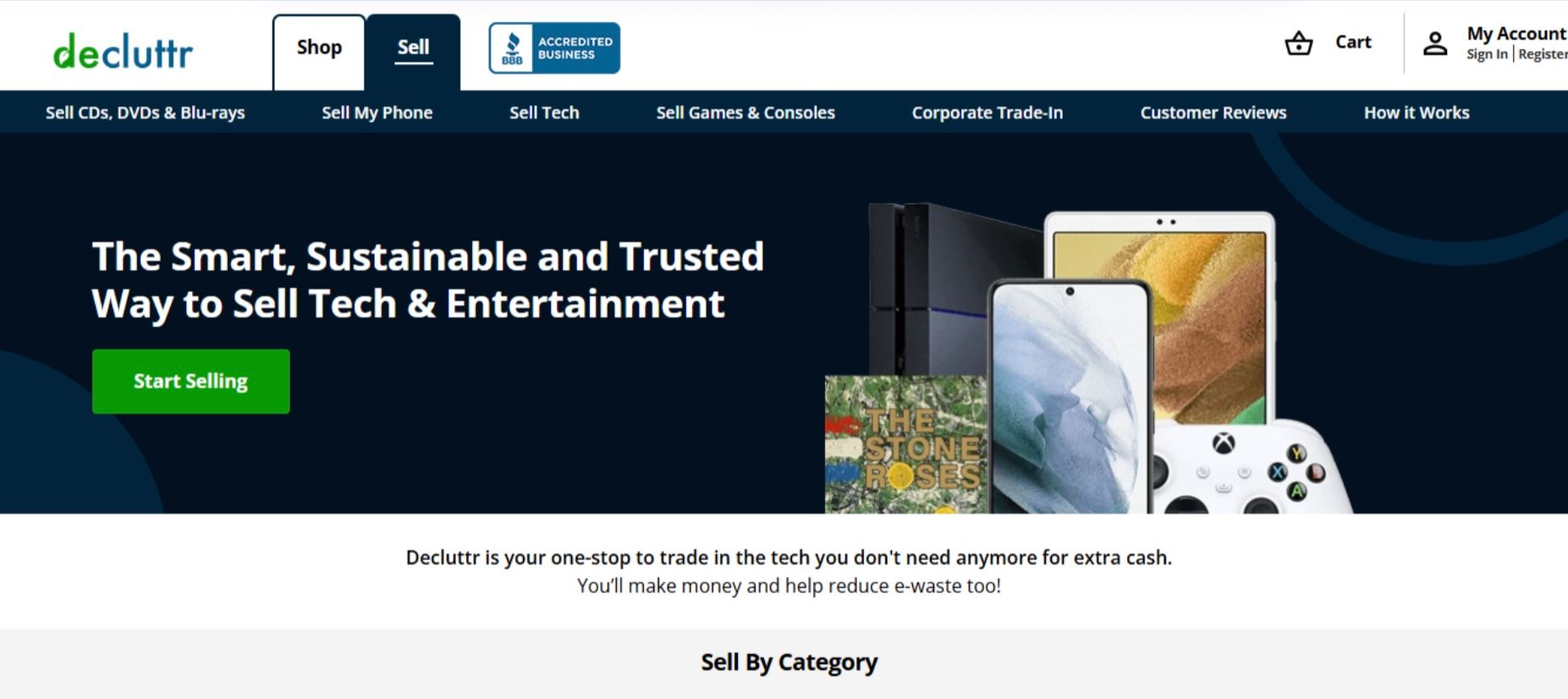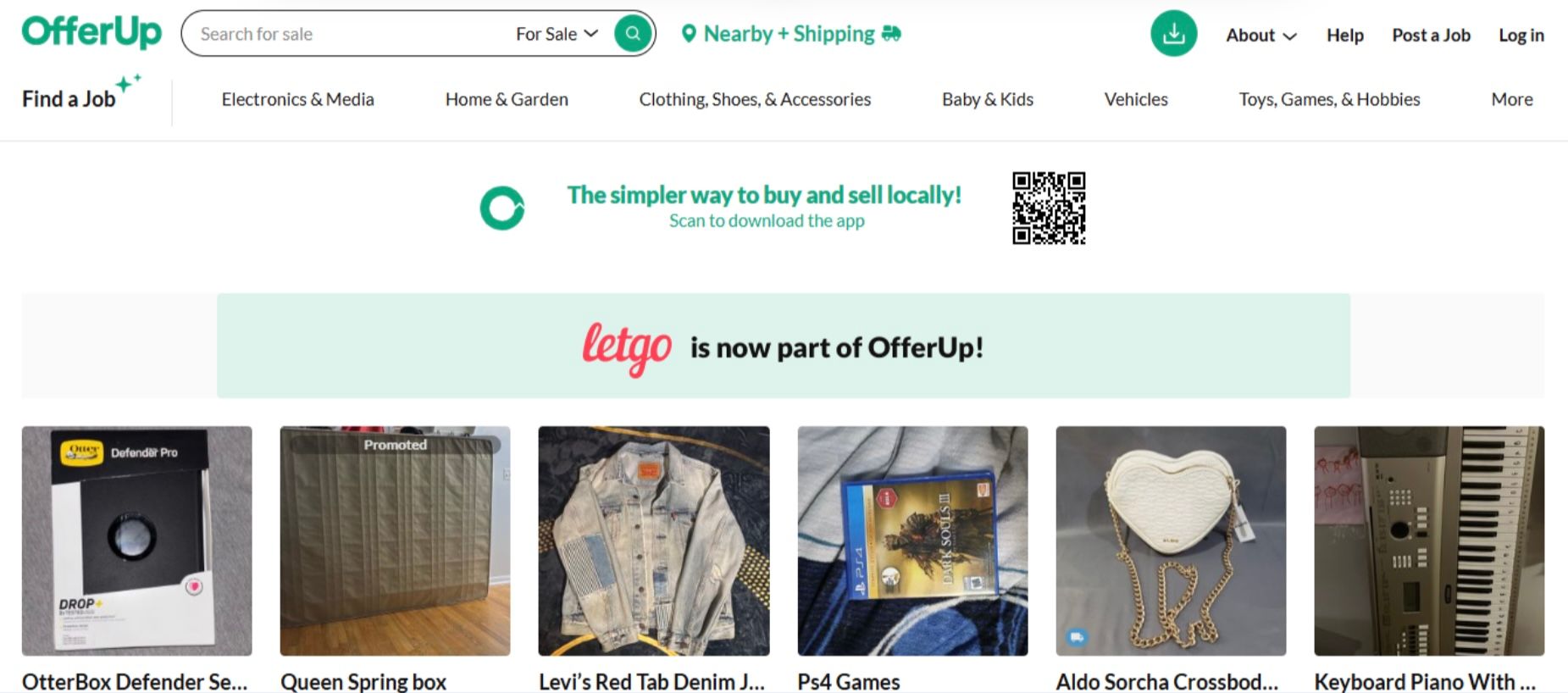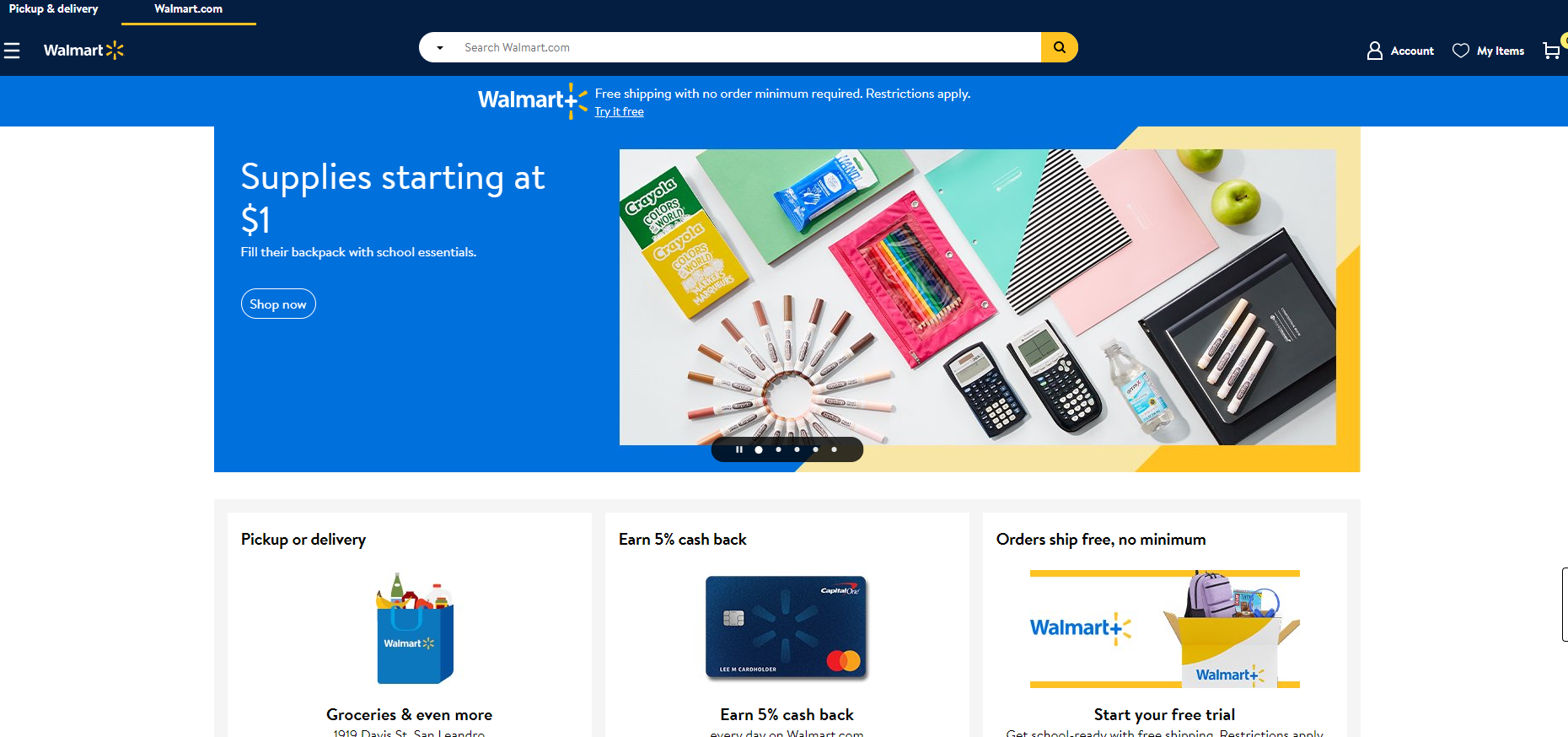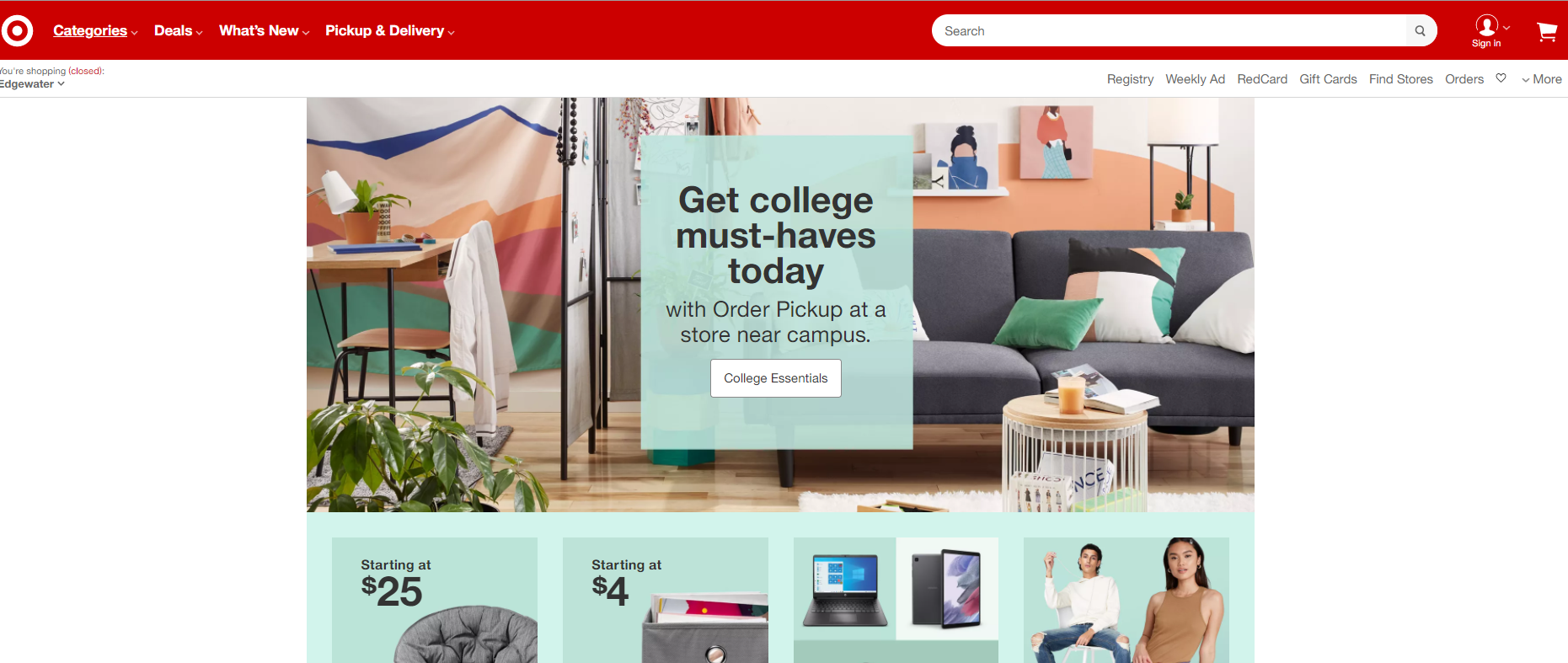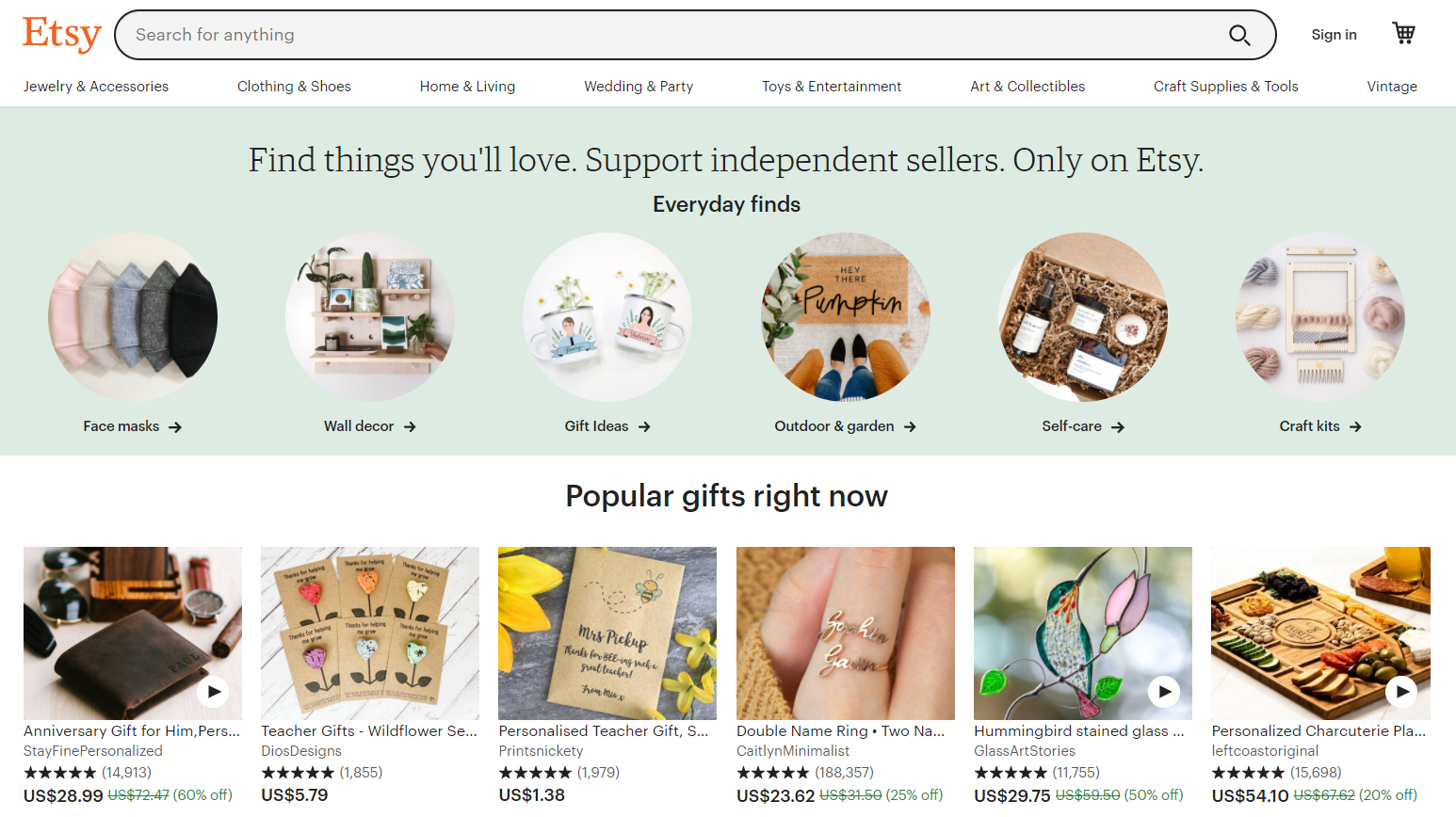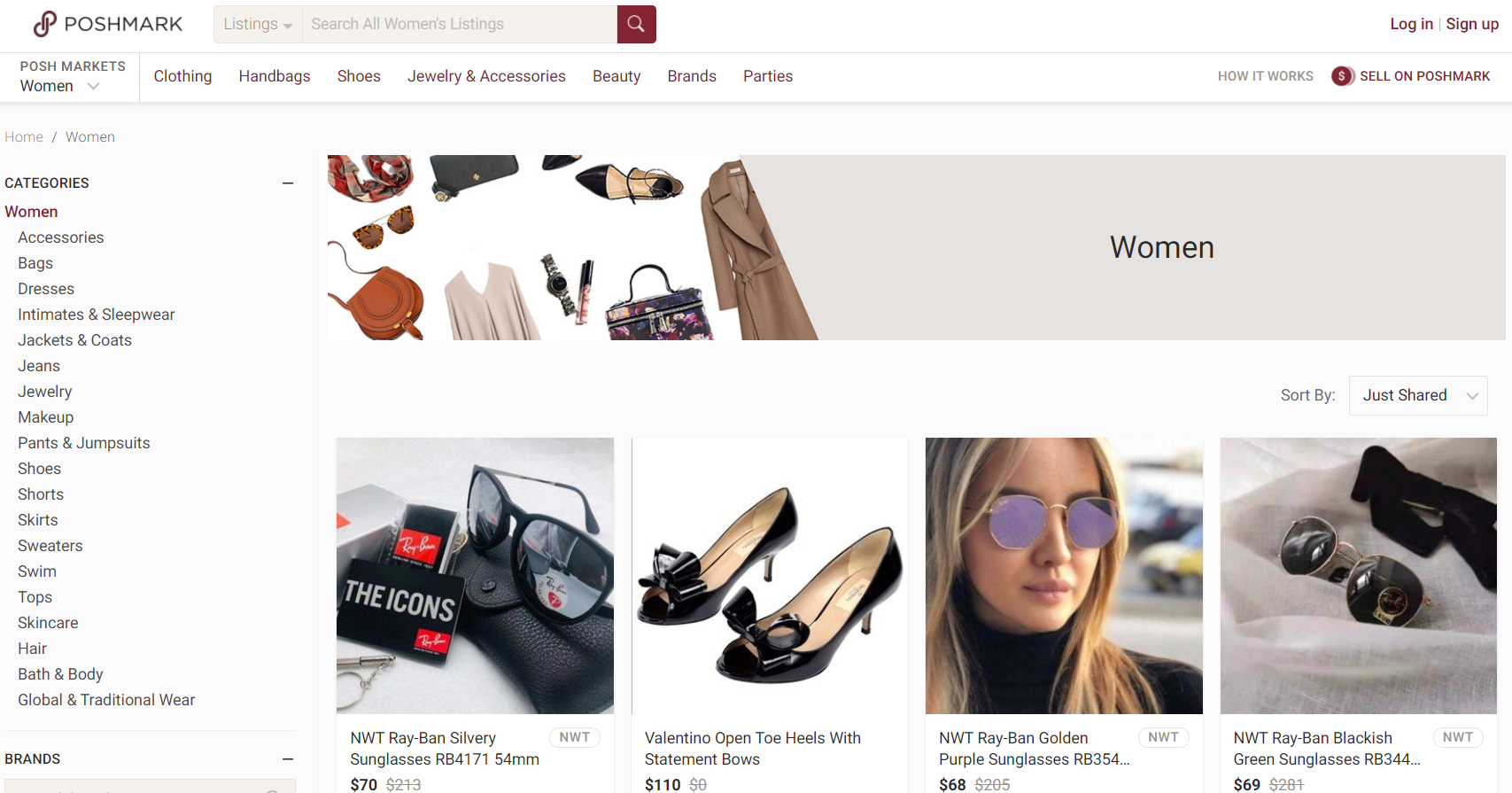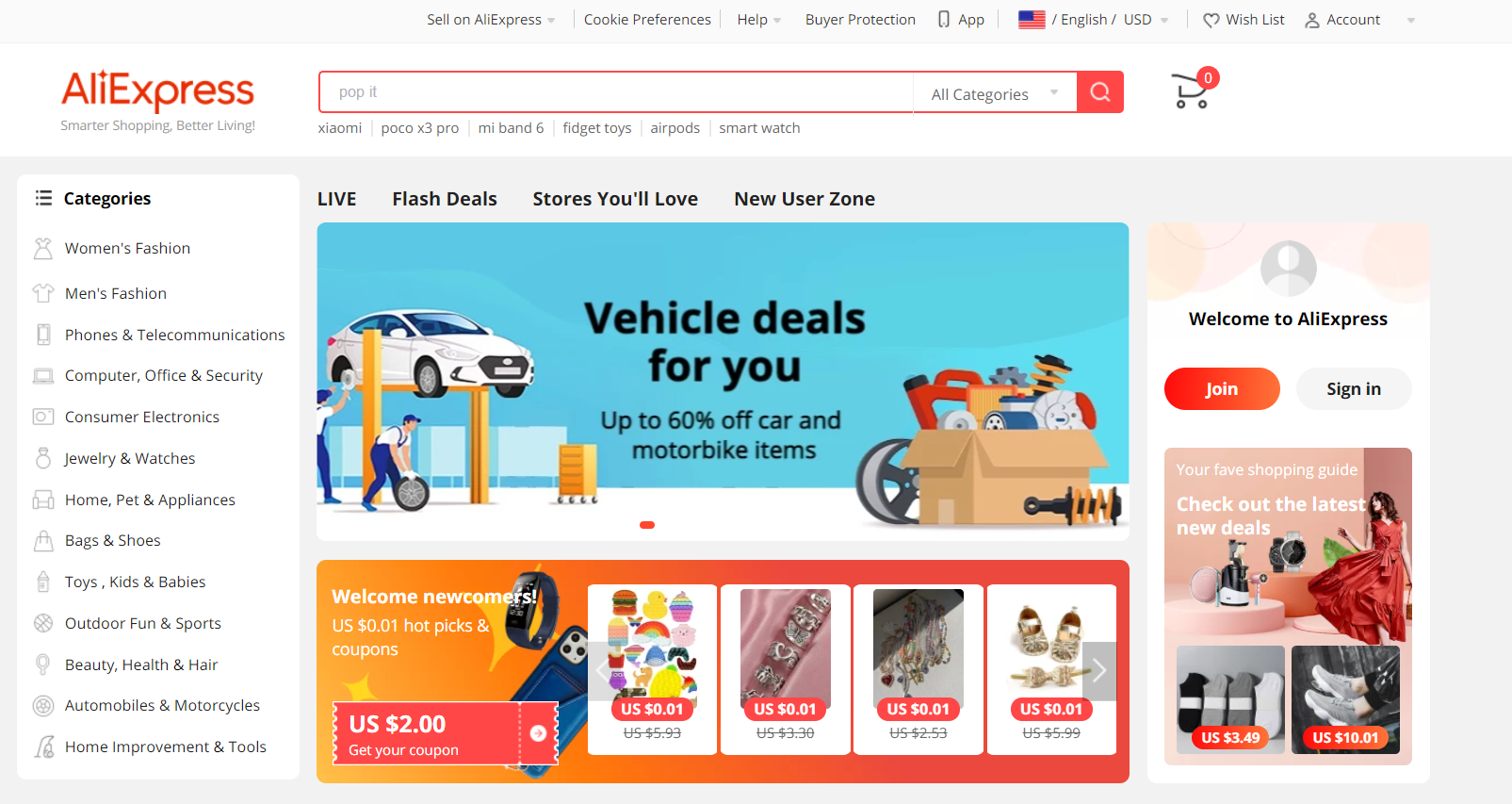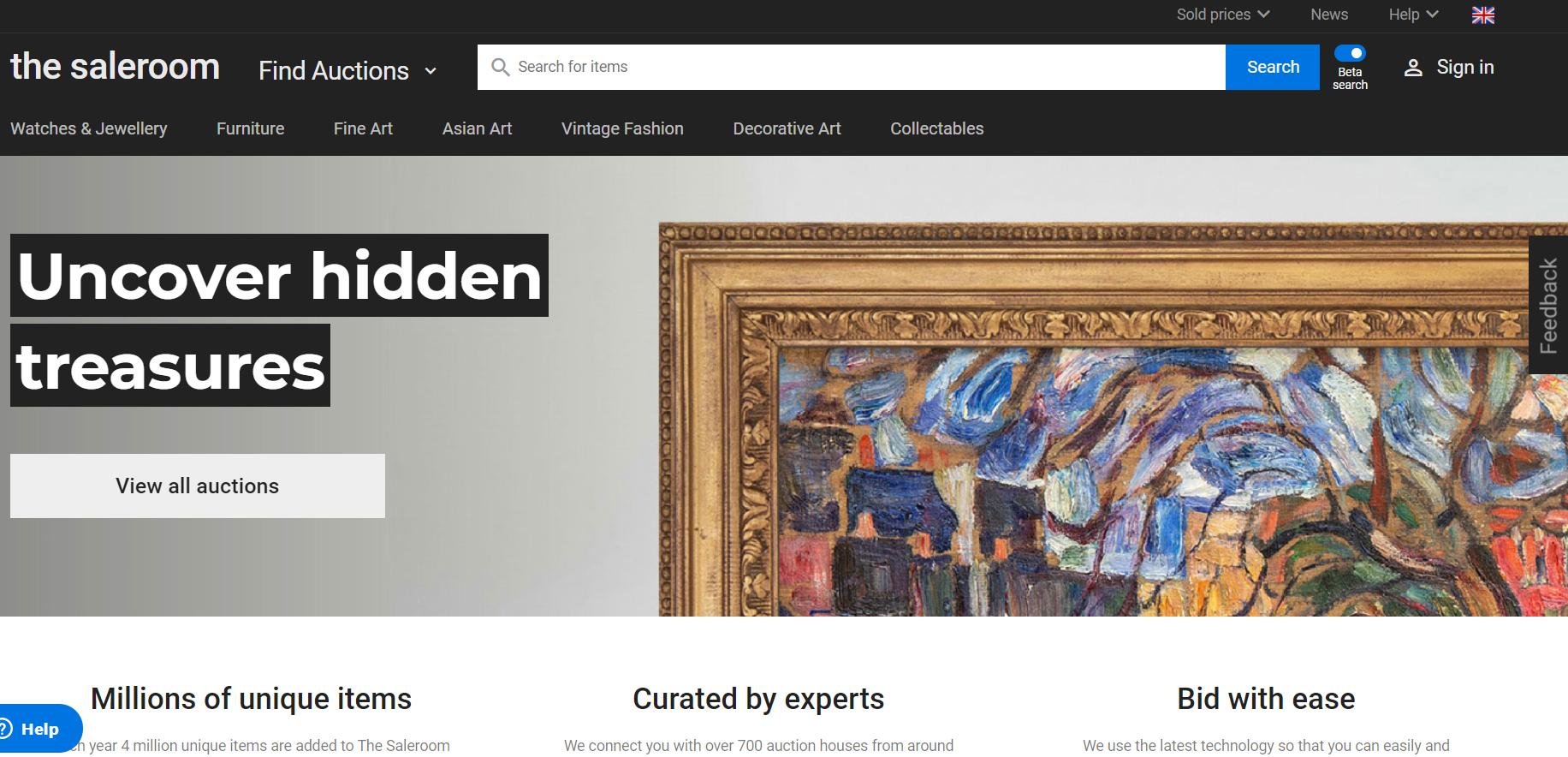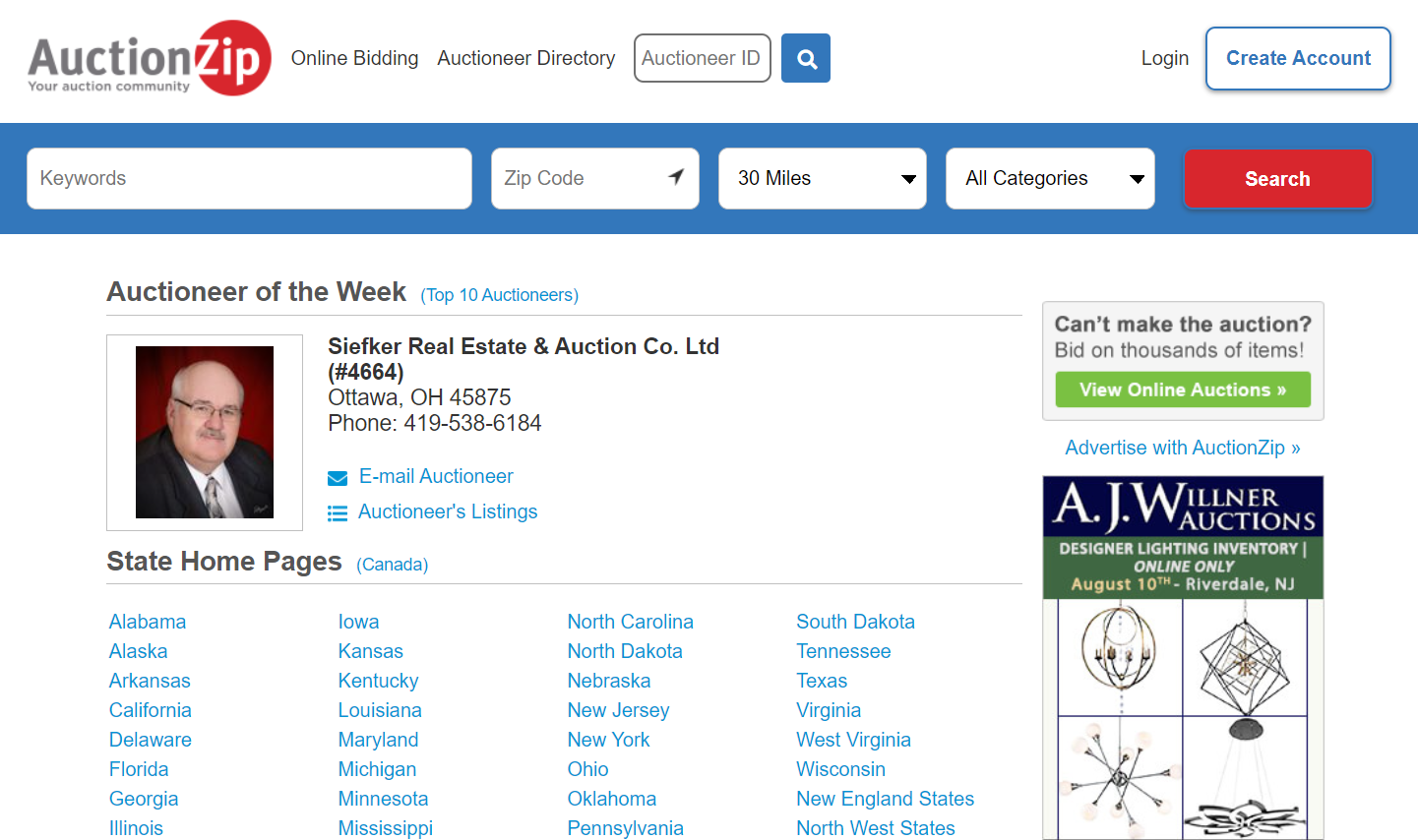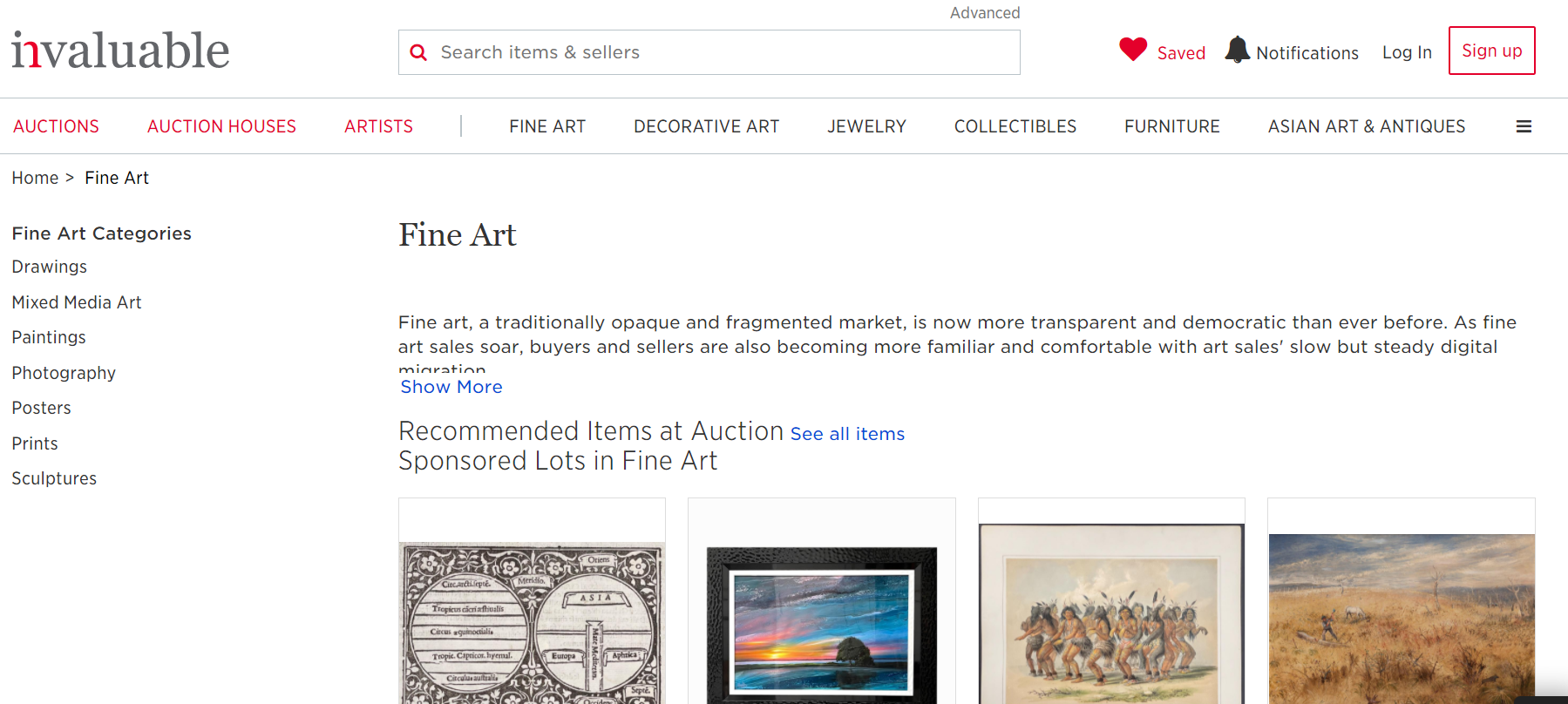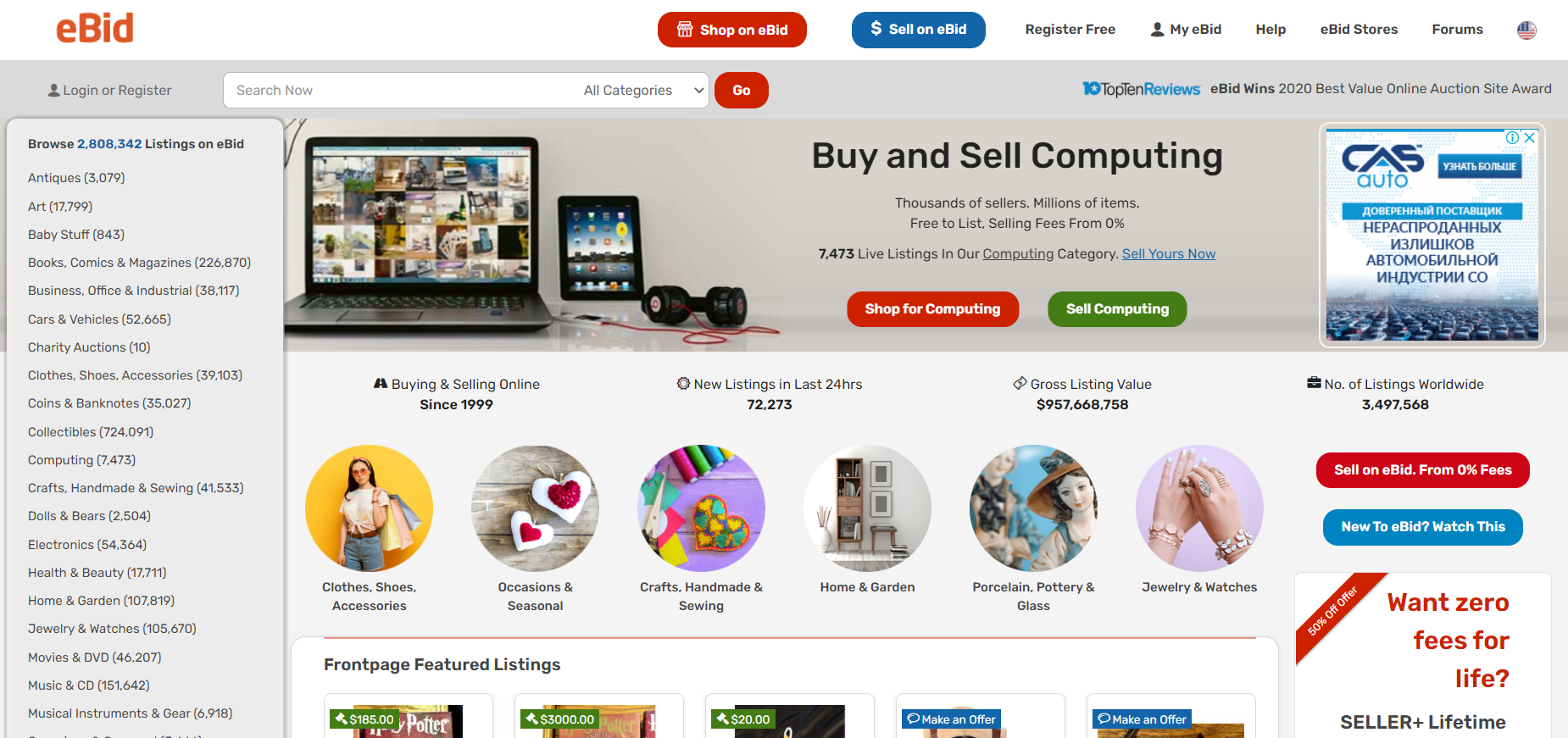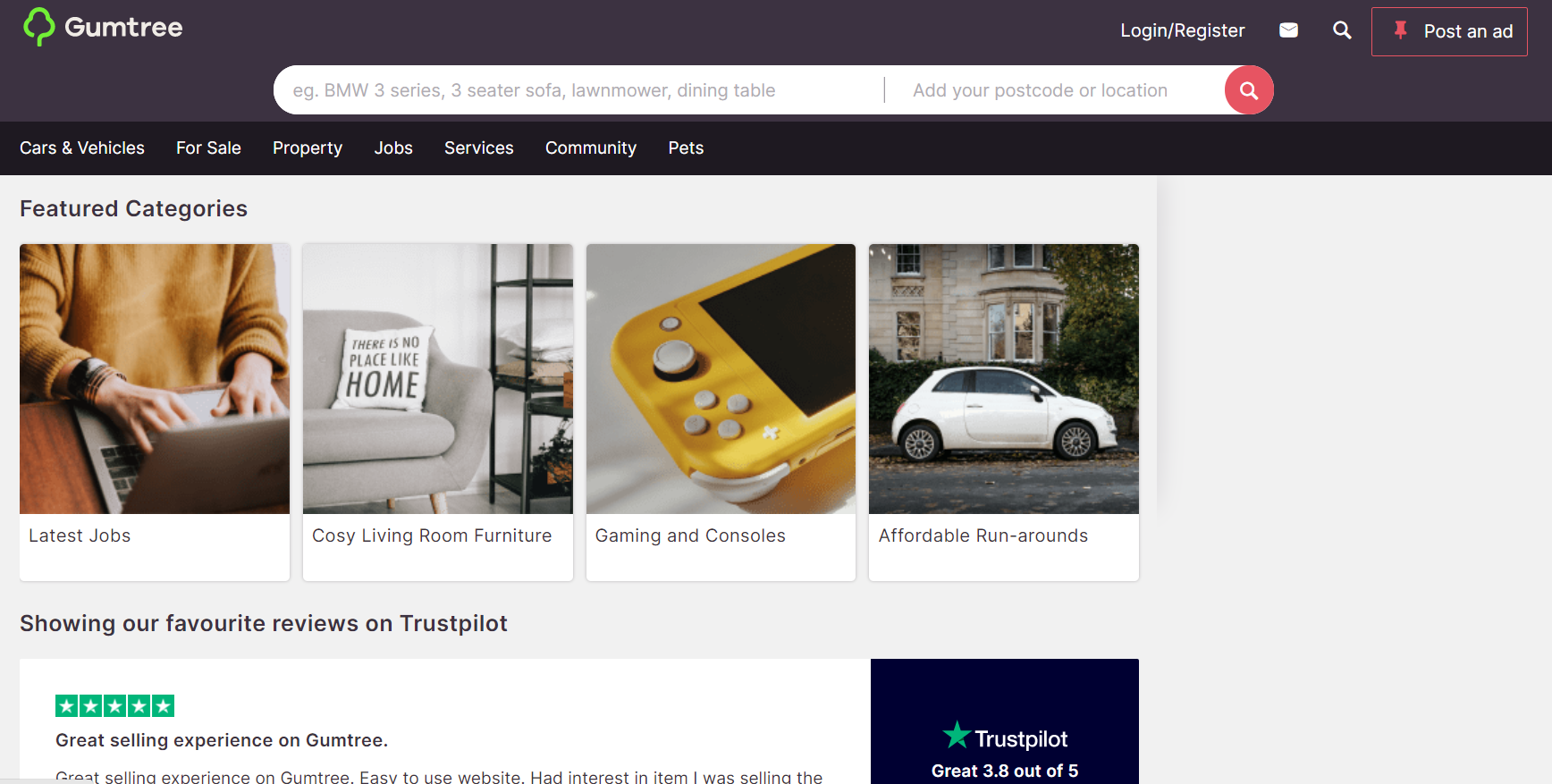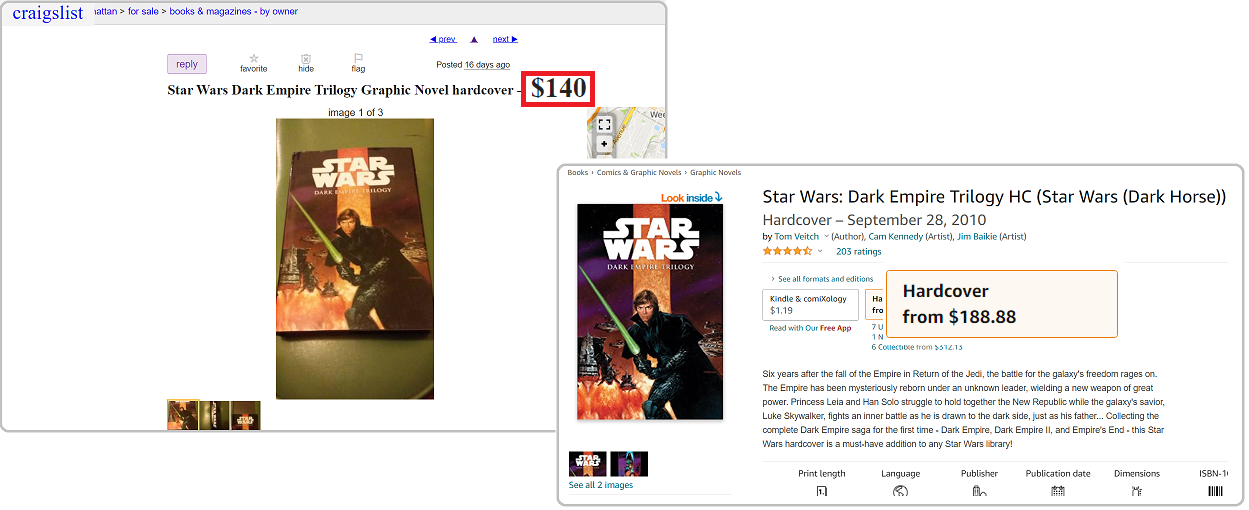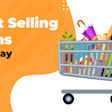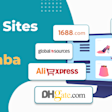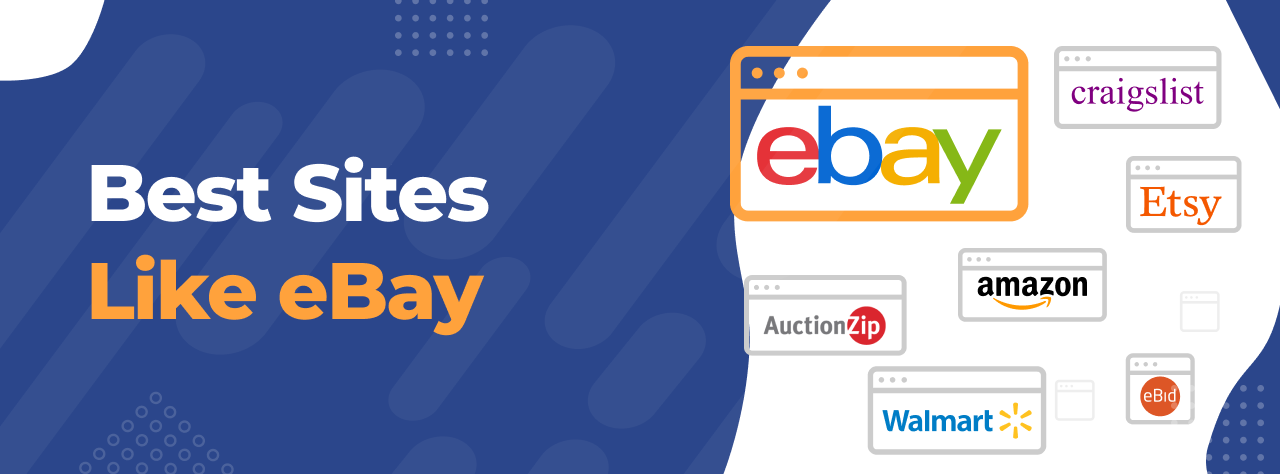
20 Best Sites Like eBay to Find and Sell Products
If you want to sell products online, eBay offers an elegant solution that doesn’t require you to have prior business experience. However, many eBay sellers tend to leave the platform because of how much they take from each sale. With this in mind, many people find themselves looking for great alternatives.
This article will help you learn more about sites like eBay and others, as you explore alternatives for selling online. So, if you are an e-commerce seller who’s looking to expand your horizons, check out this helpful list.
20 Sites Like eBay
Below, you’ll find 20 alternatives to eBay.
1. Amazon
Amazon is the largest e-commerce website in the world and likely the biggest competitor to eBay, which owns a tiny portion of the e-commerce market.
While Amazon is primarily recognized as a platform for selling new items, it also allows the sale of used products, as long as the seller clearly specifies the item’s condition on the listing. Used items are displayed alongside new ones within the same product listing, giving sellers an opportunity to appeal to price-conscious customers.
Sellers can use Amazon’s FBA program for storage, packing, and shipping, while also sourcing affordable inventory through Amazon return pallets. This enables sellers to achieve two goals with one strategy.
Pros
Gain access to one of the world's largest logistics networks.
Receive more sales because of Amazon’s huge amount of traffic.
Get massive support from third-party tools to help automate your business.
Cons
Amazon charges high fees for membership, referrals, and FBA.
Amazon has high competition in many product categories.
How to Get Started Selling on Amazon
Amazon’s huge customer base is a big reason why many sellers choose this platform. Amazon comes packed with useful features. Given its size, there are also powerful third-party tools, like AMZScout, designed to help you outsell your competition.
To get started selling on Amazon, you need to find a good product. AMZScout’s tools can help you find the right product faster, letting you calculate potential profits. Follow these steps so you can research products effectively:
1. Open the AMZScout Product Database. If you don’t have an account, you’ll be taken to a registration page where you can begin a free trial.
2. Select the product criteria you want to search for. You may choose from various options such as sales figures, product category, seller type, or price range. You can also use Product Selections to find recommendations based on proven product criteria.
3. Click Find Products to see your results.
4. Select any products that align most effectively with your criteria.
Once you've gathered some product ideas, you can explore additional items within the same niche to assess the potential for expansion. The PRO AI Extension also lets you check data including sales and price history, competition level, and more.
1. Get the AMZScout PRO AI Extension from the Chrome Web Store. Start a free trial with a new account (if you haven’t already done so during the earlier steps).
When the installation is finished, Amazon will open automatically.
2. Check out different product niches on Amazon. They can be:
Product categories (and their subcategories)
Trending products on Amazon
Items found in the Product Database (see step two above)
3. Review various niches and specific products. When the page fully loads, click the AMZScout button in the left corner of your browser. This will show you important insights, including:
Profit data from a built-in calculator
Monthly sales estimates for niche and product
Historical data on price and sales trends for both the entire niche and individual products
Competition levels determined by the number of sellers and reviews
Amazon is the largest e-commerce marketplace in the world, which enables this website to offer ample opportunities for new sellers to find low-competition fields.
2. Vinted
Vinted is an international online marketplace based in Vilnius, Lithuania that specializes in second-hand items. This site operates across Europe, the U.K., and the U.S., and boasts over 35 million users.
The platform offers a diverse selection of products, including clothing, accessories, shoes, and home goods like decor items and small electronics. One standout category is pet supplies, which is driven by demand for quality pet products. According to AMZScout’s PRO AI tool, this niche generates approximately $500,000 in monthly profits on Amazon, and experiences over 20,000 monthly sales.
Note: While AMZScout’s data focuses primarily on Amazon, the trends are broadly applicable, as Amazon’s dominance in e-commerce mirrors global consumer preferences across various platforms.
Vinted charges no commission fees to sellers. If you’re planning to sell on Vinted, take a look at this practical guide.
Pros:
Zero listing or selling fees mean you get to keep more of your earnings.
Reliable safeguards for sellers, like full refunds for both parties if a shipment goes missing, ensuring greater confidence in every transaction.
Cons:
Reddit threads highlight occasional buyer scams and fake profiles that can complicate sales.
The app lacks several useful tools, such as browsing your own listed items easily.
3. Mercari
Mercari is an intuitive app tailored for selling a wide range of items, from pet supplies to clothing, and provides versatile shipping choices to simplify the process for sellers. As a platform that’s still expanding, Mercari offers a less crowded marketplace, which gives sellers a competitive edge.
Listings can be set up quickly in just a matter of minutes, and the app’s clean design enhances the user experience. You can post shoes or any other item for free with no seller fees, although you can expect a $2 charge for standard bank deposits and a $3 fee for instant cashouts.
If you’re thinking about selling on Mercari, consider checking out this article to explore the top 10 best-selling items on Mercari.
Pros:
The app makes the process of listing a breeze, letting sellers snap photos and post items quickly.
Affordable nationwide shipping comes with prepaid labels for easy delivery.
Cons:
Lack of seller protection heightens the chance of falling victim to buyer fraud.
Instant Pay limits withdrawals to $600/month, capping quick access to funds.
4. Depop
Depop is a well-known platform that’s primarily focused on selling pre-owned items, with over 43 million users. As a subsidiary of Etsy, Depop enjoys a strong reputation and trust among customers. The platform’s user-friendly design and vibrant community set it apart even more.
Depop focuses on clothes and shoes, with a fast-growing kids’ sector. Since children tend to outgrow these items quickly, many gently-used products are still in fine condition, plus there’s demand for affordable designer kids’ pieces. According to AMZScout PRO AI, this niche generates over 6,000 sales/month on Amazon, yielding more than $140,000 in profits. Sellers can also stand out from the competition since pre-owned items face less rivalry in terms of sizes.
U.S.-based sellers pay no platform fees - only a payment processing fee of 3.3% + $0.45 per transaction.
Pros:
AI-powered listing creation simplifies the selling process
Attracts a younger audience compared to eBay
Cons:
International sellers face a 10% fee on the total transaction amount, including shipping costs
Lower profit margins due to buyers seeking bargain deals
Free shipping for sellers
5. Decluttr
If you’re looking to sell tech-related items you no longer need, Decluttr is an excellent option for earning extra cash. This company is highly trusted, boasting a 4.3-star rating on Trustpilot based on over 28,000 reviews.
According to Decluttr, one of their top-selling categories is phones, which is no surprise, given the constant demand for new devices as technology advances. Per AMZScout PRO AI estimates, the phone niche generates over $1,500,000 in monthly revenue from nearly 5,000 sales.
Note: While these figures are specific to Amazon, they also reflect broader consumer trends due to widespread interest in gadgets, making this information applicable to other e-commerce platforms as well.
There are no selling fees since you’re not selling to customers but directly to Decluttr itself.
Pros:
Eco-conscious: You can opt to recycle your gadgets instead of selling them
Free shipping provided for all items sent to Decluttr
Fast payment is issued the next day after your item arrives at their warehouse
Cons:
Prices are determined by Decluttr, leaving you with no negotiating power
Items must pass a quality check to be accepted
6. OfferUp
OfferUp is a C2C (consumer-to-consumer) marketplace renowned for its highly user-friendly, mobile-optimized app, distinguishing it from key competitors like Craigslist, eBay, and Facebook Marketplace. The platform is expanding rapidly and boasts over 18 million users.
It offers a wide variety of categories, including electronics, furniture, and baby supplies (the latter being one of their most popular niches). According to AMZScout PRO AI estimates, the baby supplies category generates over $165,000 in monthly revenue from more than 1,500 sales/month on Amazon.
OfferUp charges a fee of 12.9% of the final sale price for shipped items, while in-person transactions incur no seller fees.
Pros:
No seller fees for in-person pickups, maximizing profits
Fast, secure transactions through the app
Access to a large, engaged local community
Cons:
No built-in shipping support provided by the platform
Limited to U.S.-based sellers only
7. Walmart
Walmart is the largest physical retailer in America. This company is best known for its physical stores, but the Walmart Marketplace is quickly growing to compete with Amazon. If these growth rates stay consistent, Amazon will soon face some serious competition.
Walmart shoppers can find a vast range of items in both their digital and physical stores. Walmart sells many of these items directly through its Great Value private label. Walmart also has a strong logistics network that offers two- or even one-day delivery. The advantage here is that you can pick up many of these items in-store.
Walmart is a quickly growing option for third-party sellers through its Walmart Marketplace. When selling on Walmart, you don't pay a listing or membership fee. Instead, Walmart charges an 8-15% referral fee for each sale.
If you’re thinking about selling on Walmart, take a look at this useful guide.
Pros
Walmart has no monthly fees.
Walmart Marketplace has less competition than Amazon, because it’s newer.
Walmart lets you access its huge audience and strong logistics system.
Cons
Walmart has high referral fees for most products.
Walmart has pricing requirements.
Walmart has a smaller audience of shoppers than Amazon.
8. Target.com
Target is incredibly similar to Walmart in terms of both its physical and online store offerings. While they are mainly known for operating with big brands, Target Plus (Target+) is this store’s marketplace for third-party sellers. This third-party marketplace has only been around since 2019.
The company appears to have a more positive employee reputation than its competitors, meaning they can focus on providing a better customer experience. As a result, many consumers expect Target’s goods to be more expensive. However, Target does offer a wide variety of low-cost options.
Target has a robust fulfillment system with same-day pickup or delivery. They also offer numerous promotions and discounts to help attract buyers. Target is a newcomer to third-party sales, creating a fascinating competitive field. Their referral fees are similar to Walmart's, ranging from 5-15%.
Pros
Target is a household name that lets you build your brand reputation.
Target’s third-party marketplace is low-competition due to how new it is.
Target lets you build a customizable storefront.
Cons
Target Plus is an invite-only marketplace.
Target has a weaker reach than Walmart and Amazon.
Target has higher customer service standards, which discourages sales of cheap products.
9. Etsy.com
Etsy is best known for its focus on creative endeavors. They allow you to sell products through both a physical and digital marketplace, but tend to focus on custom or creative items. Examples include handmade products, arts, crafts, and creative guides.
Because of their creative focus, Etsy is known for being whimsical and attracting a specific type of buyers. Artistic and crafty sellers can thrive here, building a community around their love of creative pursuits. Other than creative sales, Etsy isn’t especially known for much else.
Pros
Etsy is a well-known online marketplace that generates traffic for sellers.
Etsy makes it easy for you to build your brand with a custom storefront.
They have reasonable selling fees of $0.20item and transaction fees of 6.5%.
Cons
Etsy does not let you customize bids if you advertise across multiple platforms.
Etsy does not offer the same one- or two-day shipping as other platforms.
Etsy’s handmade category is incredibly competitive because its definitions are too broad.
10. Wish.com
Wish is best known for connecting a western audience with inexpensive overseas goods. Because many of these goods come from China, prices are incredibly low. However, this overseas marketplace can also involve slow shipping. As one of the most well-known e-commerce apps, Wish is excellent.
The Wish Merchant program is their platform for third-party sellers. They accept brand owners, retailers, crafters, or artists. Selling fees on Wish typically fall around 15 %/sale.
Wish boosts its sellers through built-in promotional tools and the Trusted Merchant program. You can use this platform in a similar fashion to Amazon, buying built-in advertising and competing organically on the platform.
Pros
Wish is excellent for international sales, selling to over 300 million people in over 120 countries.
Wish has in-app promotions, digital ads, and analytics tools that help with sales.
Wish does not require you to pay a monthly subscription fee.
Cons
Wish’s merchant program is invite-only.
Wish is not known for selling high-quality products, which might impact the perception of your brand.
Wish is known for low-cost items, which will cause brands known for quality over cost-effectiveness to struggle.
11. Poshmark
Poshmark is an online marketplace that lets you sell a wide range of both new and used products. They have a good selection of the latest fashion brands as well, so selling clothing here is definitely an option.
Poshmark also allows goods trading on the platform. Buyers and sellers can trade items instead of paying money. Poshmark supports a unique social network (similar to Facebook Marketplace) for this purpose. The company also supports fulfillment by printing shipping labels through PoshPost.
Selling fees include a flat commission of $2.95 for listings under $15. For sales above $15, Poshmark takes a 20% cut from the sale price for whatever you list.
For more details on selling on Poshmark, check out this informative guide.
Pros
They have a large, active user base with plenty of traffic generated for you.
Poshmark lets you print a prepaid shipping label through the platform.
They have no listing fees, letting you create as many product pages as you want.
Cons
It‘s one of the more expensive selling platforms (often 20% of your revenue is taken through fees).
Poshmark has login requirements and will delete your account if you don’t follow them.
12. Facebook Marketplace
Facebook Marketplace is built directly into the social media site. This platform allows you to create listings through the marketplace and share them with groups. Facebook Marketplace supports both B2C (business-to-customer) and C2C selling.
This online selling platform is available to anyone with a Facebook account. Unlike classified ad selling, Facebook lets you take payments and create official product listings through the platform. This platform has also gone through some significant updates.
Customers contact you via Facebook Messenger for details. When a sale is made, the selling fee is 5 %/shipment, or $0.40 if the item is under $8.
Pros
You can leverage Facebook's massive user base.
You can create product listings to share on multiple pages.
You get decent per-item listing rates.
Cons
Facebook buyers might ask to meet you, which raises safety concerns.
Facebook is incredibly popular, meaning it’s a relatively high-competition environment.
13. AliExpress
AliExpress is an international online marketplace owned by Alibaba Group, a company known for supplying products to e-commerce sellers. This Chinese market is available to both businesses and individuals. AliExpress has no private-label brands, allowing its third-party sellers to reap the rewards.
This market features everything from clothes and auto tools to 3D printers. Many buyers use the market to source products for resale, especially those who participate in dropshipping.
The commission rates taken by AliExpress range between 5-10%, depending on the product category.
Pros
Excellent tool for sourcing products, as its prices are very low.
Low commission rates for the industry.
Access to an international platform with automatic translations.
Cons
AliExpress isn't known for providing quality products, and items often have defects (which is important especially if you plan to resell these products, in which case you should order samples).
AliExpress’s storefront editing is pretty limited.
Their translations are automatic, meaning that they aren't always accurate.
14. The-saleroom.com
The-saleroom is a UK-based auction site used to sell collectibles and antiques. It supports both live and timed auctions. While auctions take place at a UK-based auction house, you can view them and make bids online. Timed auctions are similar to those on eBay.
To sell on The-saleroom, you must live in London (or nearby). You can take your collectibles to a valuation expert through the group, who will provide you with a number. You cannot sell as you would on Amazon or Walmart, as there is no third-party account access.
Pros
You can receive a proper valuation of your collectibles.
You can connect with multiple reputable auction houses all over the UK.
You get a clear breakdown of how much you will need to pay for valuation and resale services.
Cons
The-saleroom is not intended for starting a new business or brand.
The-saleroom offers no direct sales or third-party accounts.
The-saleroom works with auction houses who will take a significant portion of each sale.
15. AuctionZip.com
AuctionZip is an online auction marketplace where sellers and buyers come together for everything. The site receives over 1.5 million monthly visitors (fewer than eBay). AuctionZip features live auctions broken down by different states in the US.
To join the auction, you can create a free auctioneer account. There are no monthly fees, but you need to pay $20/listing, which is a bit steep. As a result, you'll find mostly expensive items here. Because of this, you can buy physical property, vehicles, furniture, and everything in between.
For those who sell more expensive items, this site can be ideal for exposure. AuctonZip is found among the top results for auction websites. So, if you want to list a more expensive item, AuctionZip isn't a bad idea.
Pros
AuctionZip is one of the only auction sites that lets you sell a property.
AuctionZip has no monthly fees or complicated account setup.
AuctionZip is less competitive than more popular sites, like eBay.
Cons
You have to pay a $20/listing is $20, alienating low-cost items.
You have to sell expensive products, which tend to move slower.
You have to deal with a poor user interface because of infrequent updates.
16. Invaluable.com
Invaluable is an auction website for fine art, jewelry, and collectibles. It hosts over 5,000 sellers in 53 countries. You'll also find over 260-thousand items from some of the most prestigious auction houses in the world.
Much like The Saleroom, Invaluable works in both live and timed auctions. You can view their live auctions online and make bids there as well. To sell on Invaluable, you must work with a registered auction house.
This website receives over eight million visitors and 425,000 bids each month. You can get this type of exposure by using the Invaluable Private Label Service, which creates a website and mobile app for you to host auctions from your site. However, unless you are an auction house owner, you won't find much use for this private label service.
Pros
This company is known for high-quality collectibles in many product categories.
Invaluable works with some of the most prestigious auction houses in the world.
Invaluable lets you host both live auctions and timed auctions.
Cons
Invaluable’s system only works with auction houses.
Invaluable can be somewhat complex for new online sellers.
Invaluable has a no-refund policy, with almost no exceptions.
17. eBid
eBid is a direct competitor of eBay, which you can probably tell from how similar their names are. eBid is an online marketplace with a mix of auctions and fixed-price products. There are nearly three million items for sale across numerous product categories. None of these products come from eBid, they are all from third parties.
Like eBay, eBid offers a free account (only for buying). In order to sell, you need to choose between the Silver or Gold plans. Regardless of which plan you choose, the fees are pretty easy to understand.
The Silver Plan has a $0 auction listing fee and no monthly fee, but does include a 5% final value fee on the product's sale price. With the Gold Plan, the final value fee is removed in exchange for an upgrade fee, ranging from $1.99 (for seven days) to $64.99 (for one year).
Pros
eBid’s fees are cheaper than those on eBay.
Their rules are more lax and consistent.
This company lets you sell both used and new products.
Cons
You have to deal with eBid’s low traffic, making it hard to compete for exposure.
You might not be able to make significant sales because of eBid’s low popularity.
18. Liveauctioneers.com
LiveAuctioneers is an online market for both timed and live auctions. Shoppers can find auction categories like collectibles, antiques, and art. Just like other auction sites, this one relies on auction houses to support its listings. To use this site, you'll need to cosign with trusted auction houses.
LiveAuctioneers offers fraud protection, flexible payment methods, 24/7 customer support, and on-site advertising services, but you need to pay for these services. Listing fees cost $199 (plus a 15% commission) for online-only services, and $650 for traditional auction house sales.
Pros
This site has a tool for looking up nearby auction houses.
They offer numerous protection benefits for sellers.
Cons
You need to pay a 15% commission, which is incredibly expensive.
You need to cosign with auction houses in order to sell products.
19. Gumtree.com
Gumtree is an online classified advertisement website from the UK. This company advertises itself as offering "everything you need to settle into a new city." Users can list many types of products, from property to jewelry.
This website is solely for C2C (consumer-to-consumer) sales. So, if you want to operate a business here, you'll have to come up with creative solutions. Because this is a site for classified ads, there is no monthly fee. However, you can pay for front-page exposure.
Pros
No expensive fees
No account approval process
Cons
It‘s challenging to get exposure here because Gumtree has low traffic.
It’s difficult to sell products there because there are many scammers.
20. Craigslist
Craigslist is another online classified advertisement site with just as much history as eBay. This site divides its marketplace into different geographic areas (cities, towns, states, etc.). Because this is a site for classified ads, you can sell or request almost anything here.
Anyone can create an account on Craigslist, which is part of the risk. Users have to take extra precautions in order to avoid being scammed.
You also don't need to pay to list products (unless they are job openings). However, all payments need to take place off the platform.
Pros
This is a great start for sellers who need quick cash but have no money.
This site is simple and there is no complex account creation process.
Cons
It’s difficult to get exposure here because sites are segmented into locations, resulting in some low-traffic areas.
It’s difficult to sell here because there are many scammers who will waste your time.
Conclusion
When choosing among sites like eBay or other numerous online marketplaces, the route you choose will vary depending on your particular needs. You'll find an array of online marketplaces that offer business growth, sites for collectors, and auction sites for selling to fellow customers on this list. Start by browsing the list above, and make the best choice based on your needs - best of luck making a bit (or a lot) of extra money!
